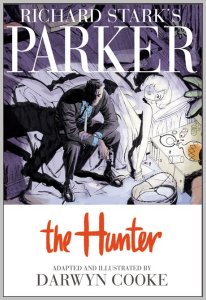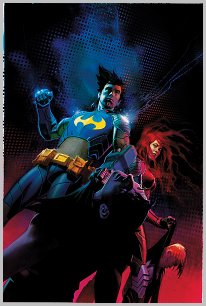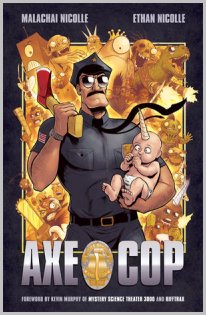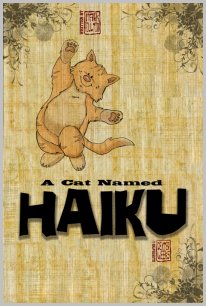Following an extended hiatus, Thor’s Comic Column returns, as Sean Fahey and his band of four-color reavers point you toward choice pieces of comic-book plunder, and occasionally steer you clear of rotting bits of funnybook flotsam.
 THE HUNTER (IDW, $24.99)
THE HUNTER (IDW, $24.99)
By Sean Fahey
I can’t imagine a more perfect gift for a fan of hardboiled crime fiction than “The Hunter,” Darwyn Cooke’s razor sharp adaptation of the first book in legendary writer Donald Westlake’s Parker series. A revenge story stripped down to its most raw, primal essence, “The Hunter” follows Parker, a mid level thief and grade A hard ass, on his quest to settle the score with an ex-partner that double-crossed him. At his core, Parker is a force of nature, not unlike a hurricane, dispassionately crushing everything in his path as he makes his way through New York City’s criminal underworld, from the bottom all the way to the top. There’s no stopping him. In a genre defined largely by complex characters with ulterior motives and hidden agendas, it’s powerful to see a character act with such a clarity of purpose. Such a singular focus. It would be a mistake to call “The Hunter” a simple read, but the streamlined narrative is, in some respects, the point. This is about introducing the world to Parker, and defining him through his actions. Cooke’s enthusiasm for the source material shows on every panel, and not just the shadowy aesthetic that’s come to be expected as a convention. I mean the way he treats Parker visually, from the opening panel of Parker walking right into oncoming traffic as he’s crossing into New York City to the menacing stares he gives almost everyone he encounters. It’s clear that Cooke reveres Parker, maybe even fears him a little, and deservedly so. He’s the hardest man in crime fiction.
Rating: 




Out of a Possible 5 Stars
 BATMAN & ROBIN #19, DC Comics, $2.99
BATMAN & ROBIN #19, DC Comics, $2.99
By Adam Prosser
When Grant Morrison takes over a book, you can usually expect some radical new ideas being brought to bear. And when he leaves a book, you can usually expect editorial to desperately backtrack those ideas and restore the status quo. Morrison’s almost become the poster child for this particular phenomenon in recent years, with his memorable runs on X-Men and Doom Patrol having dropped down the memory hole for no discernable reason. Batman and Robin is a different case, though: Morrison hasn’t left the book (which he launched) so much as he’s made a lateral move to Batman, Inc (which he’s also launched) and remained as the de facto “head writer” on the overpopulated Batman line right now.
That’s probably why Paul Cornell’s handling of B&R has felt, refreshingly, like a continuation of Morrison’s version. Cornell’s another UK writer who cut his teeth on 2000 AD and Doctor Who comics, like Morrison, though I suppose most British comic writers do that. At any rate, in an era where superhero writers sweat bullets trying to come up with some shocking new twist to distinguish their runs (often with laughable results), I think Cornell deserves credit for continuing the spirit of Morrison’s run. Besides, when a comic is launched with as much vim and originality, not to mention as distinctively weird a tone, as Batman and Robin, there’s still plenty to be done with the book without having to radically reinvent it.
Cornell’s first three-parter has created a new, memorable Batman villain—itself a notable feat—called The Absence. A former bit of arm candy for Bruce Wayne, Una Nemo has let her feelings of being brushed off, combined with a horrifying accident that left her with an enormous hole in her head, push her over the edge into villainy. Ironically, with her motives tied to Bruce Wayne’s behaviour, she’s striking while he’s away—but then, that’s all in her name. Going beyond her personal motives, though, Cornell does a good job tying her into a potential psychological weak link in Dick Grayson, the “expendable” Batman, which suggests that Cornell’s going to dealing with things on a more personal scale than Morrison did.
I keep bringing up Morrison, which may not seem fair to Cornell, but his shadow hangs heavily over the bat-books right now, and of course his absence from the book is probably what’s providing the meta-subtext of The Absence in the first place. At any rate, while this book isn’t perfect—there’s a somewhat contrived fakeout at the climax—this book mostly does exactly what Dick Grayson’s doing: carrying on faithfully in his mentor’s absence.
Rating: 




Out of a Possible 5 Stars
 SUPERMAN: NIGHTWING AND FLAMEBIRD TPB (DC Comics, $17.99)
SUPERMAN: NIGHTWING AND FLAMEBIRD TPB (DC Comics, $17.99)
by Graig Kent
Last year, I wasn’t terribly convinced that having both Superman and Action Comics starring characters other than Superman was a good idea, so I bailed on the entire “New Krypton” storyline that ran through those books (plus a 12-issue New Krypton maxi-series which apparently DID feature Superman). Despite my interest being piqued by the exploration of showing what makes Superman different amidst thousands of others like him (here’s a guess, he’s been influence by humanity?), it was a decision guided by intuition as much as pocketbook. Afterall, how can you truly explore that idea when your main character isn’t even appearing in his own books? Also, Geoff Johns — whose surprisingly great run on Action Comics brought new twists to Brainiac and Bizarro, as well as reintroduced Superman to the Legion of Super-Heroes and temporarily gave Clark and Lois an adopted son from the Phantom Zone — wasn’t following through on the execution of his New Krypton concept, leaving it in the hands of James Robinson (whose sister-run on the Superman title was barely palatable). It really wasn’t looking good.
On the other hand, I noticed that Greg Rucka — whose work on titles such as Queen and Country, Gotham Central, Checkmate and Detective Comics have been nothing short of stellar — was taking over Action Comics, a Superman-less Action Comics, but still, I was a bit curious. So I decided to trade-wait, and I hoped, desperately that Action Comics starring Nightwing and Flamebird would be stand-alone enough to be enjoyed on its own.
Unfortunately, with this first “Nightwing and Flamebird” trade (previously released in hardcover), is exceptionally difficult to enjoy at all. The collection covers Rucka’s first four issues of Action Comics, which introduce the new heroes to earth as well as overreach by carrying far too many sub-plots, plus an extra-sized annual which details the origins of these Kryptonians. Rucka’s storytelling seems saddled with too many tasks, including establishing new characters, their relationships with one another, setting up their purpose for being on earth, thrusting Superman’s supporting cast into the mix, carrying forth the larger Earth vs. Krypton thread to which the entire New Krypton storyline would climax, and more. The origin story is told entirely in narrative as it was the fastest way to parse through the intensely convoluted background of these characters. Nightwing is that young boy Clark and Lois adopted from the Phantom Zone, now going through some rapid aging thing, while Flamebird has tenuous connections to Supergirl and is in possession of a Jean Grey/Phoenix like flame power, which has some ties to Kryptonian mythology.
When it’s not mind-numbingly painful to read it’s an utter snooze, and literally the worst work of Greg Rucka’s I have read. It seems an almost Herculean task to try and wade through coherently all that he’d been tasked with, and were he given time and space I’m certain he could have made this quite intriguing. But as I suspected, these stories read as if they are on a compressed schedule, that there are X number of things that need to be accomplished in Y number of issues to get us to point Z. This is work-for-hire at its most evident, a creator given a task a concerted effort, but no passion at all. Comparing this to the fantastic and intricate world of Checkmate or the razor sharp characterization of Batwoman, it’s like two different writers.
I haven’t even gotten to the art, but it’s equally underwhelming, the characters stiff, the action sequences blandly orchestrated, the faces wildly inconsistent and, like the writing, completely a passion-less for-hire effort from a quartet of artists.
Unless you’re a “New Krypton” completist, there’s really no point in shelling out for this.
Rating: 




Out of a Possible 5 Stars
 AXE COP VOLUME ONE (Dark Horse, $14.95)
AXE COP VOLUME ONE (Dark Horse, $14.95)by Graig Kent
Watching my brother-in-law interact with my stepson over the years, I’ve noticed how unhinged their conversations are, with my brother-in-law encouraging my stepson let his imagination loose and guiding him to more absurd ideas, with lots of laughter along the way. When I’m with my stepson, I tend to be more realist, more parental, correcting grammar, questioning or explaining the history, biology, economics, etc. to the things that come out of his mouth, trying to get him to understand the world without being too much of a wet blanket. My brother-in-law is the fun one, I’m the educator. (As I write this my stepson is grilling me about his idea for a stuffed animal business and I’m explaining to him exactly what goes into starting your own business. Finally my BAdmin degree is useful).
But that’s sort of what I see the roles as. Parents are the responsible ones, uncles don’t have to worry about anything but showing them a good time. Ethan Nicolle isn’t an uncle (at least not that I’m aware), but he is a big brother, and the same rules apply. There’s nearly a quarter-century between him and his brother, Malachai, at ages 29 and 5, with the younger Nicolle still a bundle of unbridled imagination and the elder Nicolle a burgeoning indie comics star. To some, that the two have paired up and created a web comic/internet phenomenon may be surprising, to me I’m just surprised this hasn’t happened before.
Comic creators often take inspiration from their kids, but I think most creators/parents would have a difficult time taking the story and characters created by a 5-year-old and transposing them to the page relatively untouched. A big brother on the other hand, especially a gifted cartoonist like Ethan, would see the humour in letting his little brother’s words stand on their own.
Axe Cop is, simply put, ridiculous. It’s absurd but gloriously so. This compilation reprints stuff available for free on the web but with added commentary on the behind the scenes process and thoughts on individual strips and storylines. There’s two structures to Axe Cop, the first being stories of varying page lengths, the second being more comic-strip style one-page-or-less “Ask Axe Cop” in which Malachai (via Axe Cop) answers readers’ questions. The latter are more successful as entertainment, their brevity heightening their absurdity, while the stories are those of a five-year-old structured and guided as best possible without compromising their twisted innocence by big brother Ethan.
This is a fascinating, frequently laugh-out-loud funny project, and brilliant as art, entertainment and irony. Ethan, whose previous work on Chumble Spuzz from SLG caught my attention, really delivers the visual comedic punch these crazy stories need. His character designs (Baby Man is a favourite) are on their own often hilarious enough. And for his part, Malachai has an impressive level of continuity embedded into his creation that both help create a sense of cohesion to the entire project but remarkably don’t confine it from regularly going off the rails. Unpredictable, unique, and cult worthy, this is as pure as entertainment gets.
Rating: 




Out of a Possible 5 Stars
 CAT NAMED HAIKU (Arcana Press, $5.95)
CAT NAMED HAIKU (Arcana Press, $5.95)
By Jeb D.
Pictorial storytelling is the ideal medium for a work that can appeal to both adults and children on their own separate levels. Typically, this will be something like Rocky and Bullwinkle, with silliness on the surface for all to enjoy, and wry jokes beneath that only Mom and Dad will get. More common in today’s comic marketplace are books like the recent The Stuff of Legend, which use the trappings of children’s fantasies (toys coming to life) to tell a story with darker, more “adult” undercurrents. A Cat Named Haiku is more or less the reverse: for all its deceptively childlike simplicity, this is very much a child’s comic for adults.
Writer (and cat owner) Mark Poulton has chronicled what is more or less a day in the life of a housecat, whom he calls Haiku, and the narration takes the form of–whoda thunk–haikus from the cat’s perspective. I say it’s very much an adult story, because in a child’s book, a storytelling cat ought to be having all manner of wild adventures, maybe in outlandish costumes, or with equally intelligent mice, dogs, etc. But Haiku’s story is a normal, homey, suburban one: instead of fording mighty rivers, he drinks from the toilet bowl, and when his claws come out, they sink into nothing more vulnerable than the living room sofa. Cat owners will smile with recognition at the situations, but the tidiness of the haiku form makes the book resemble a bound volume of Hallmark greeting cards.
And the highly capable artwork reinforces that impression: Haiku has a genial smile, expressive face, and curious eyes; his body has the plush roundness of a Care Bear. Artist Dexter Weeks has set Haiku’s story against a backdrop resembling a Japanese screen, which adds a bit of character, but for all his draftsmanship, Haiku never transcends the obvious cuteness. As if to drive home the point, Arcana is also offering a Haiku coloring book.
A Cat Named Haiku is clearly a labor of love, and a well-crafted one; anyone for whom the love of a cat is a strong sentimental bond could easily fall in love with it. That aside, though, I’m not sure that many kids, or other adults, will be won over by the story on its own merits, the way that something like, say, Owly, could do.
FOR CAT LOVERS: Rating: 




Out of a Possible 5 Stars
FOR EVERYONE ELSE: Rating: 




Out of a Possible 5 Stars